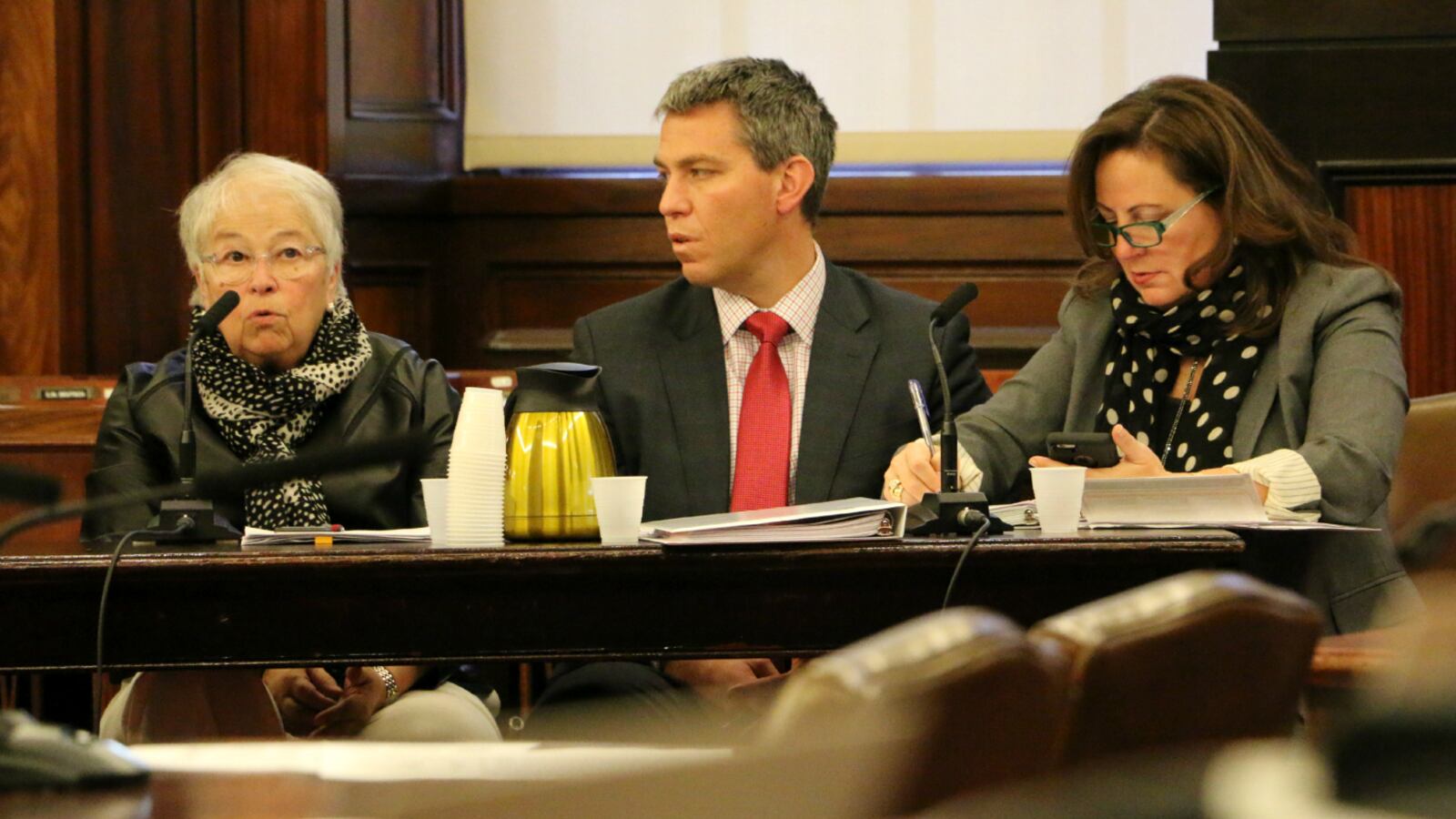After one year and millions of dollars, the de Blasio administration’s high-profile effort to revitalize its struggling schools has reduced the percentage of frequently absent students by three points, the schools chief told city lawmakers Monday.
Chancellor Carmen Fariña offered few other hard numbers on the “Renewal” program’s progress during nearly two hours of testimony before a friendly City Council committee. Instead, she touted gains at a handful of the 94 low-performing schools and described the extra assistance they have received through the program, which is expected to cost nearly $400 million over three years.
The initiative has come under fire from some critics for a lack of clear goals and performance measures, but lawmakers did not press hard for more details Monday. After years of clashing with the previous administration over its strategy of closing troubled schools, the council members seemed eager to accept Fariña’s assurances that this new approach of saturating challenged schools with extra services and staff training will lead to better outcomes for students.
“It certainly is refreshing to hear all the work that’s being done to turn around our struggling schools,” City Council Education Chairman Daniel Dromm said during the hearing. “That is in opposition to what we saw in the past, where our struggling schools were pulled down, torn apart, and teachers and administrators were blamed for the faults of the system.”
Some of the only concerns raised during the Council’s oversight hearing on the Renewal program came during testimony by a principals union official who complained that school leaders are being forced to do distracting paperwork. The union leader, Mark Cannizzaro, also noted that some schools that have requested coaches are still waiting to receive them. But even Cannizzaro, the union’s executive vice president, blunted his criticism with praise for Fariña and the Renewal program, which he called “visionary.”
The schools in the Renewal program face daunting challenges. The vast majority have seen their enrollment numbers dwindle in recent years, even as they serve a disproportionate share of English learners, black and Hispanic students, and students in temporary housing — all of whom typically post lower-than-average test scores and graduation rates.
Many Renewal schools are also under intense state pressure to show rapid progress. The state education department has identified 50 Renewal schools that could be taken over by an outside entity if they fail to make gains within two years. Another eight “out-of-time” schools must show immediate improvement or face closure.
Asked about those lowest-ranked schools, Executive Superintendent Aimee Horowitz, who runs the Renewal program, told the council that these schools have made strides in attendance, family involvement, and safety. The schools have shown “incremental” academic progress, she said, but did not offer any specific details.
Fariña listed various types of support the city is providing the Renewal schools: training teachers to help students with special needs, longer school days, and new partnerships with nonprofit agencies that provide counseling and other services to students and their families. She also named a handful of schools that have seen their attendance rates and test scores rise over the past year. (Notably, she did not cite any high schools.)
Improved attendance is “first and foremost” how the city will gauge the schools’ progress, followed by increased parent involvement, Fariña said.
In May, the city gave each school customized academic goals through 2017 around test scores and graduation rates, but those have not yet been made public for all the schools. At the hearing, Fariña did not shed any additional light on those targets.
“Our goal is that all schools show improvement in some way or another,” she told the council, adding that “success has many parameters.”
One of the few areas where Dromm pressed the department was on its efforts to reduce class sizes in Renewal schools. A recent analysis by the advocacy group Class Size Matters found that about 60 percent of Renewal schools had some classes with 30 or more students, which is just below the contractual limit of 32 students for grades one to six.
Fariña said that class size is something the city is “going to keep looking at.” One solution, she said, is to place extra staff in classrooms that need lower student-teacher ratios.
Cannizzaro’s testimony came after Fariña and the other department officials had already left the hearing. He applauded the Renewal program but detailed several concerns that have been raised by his members.
Some principals who requested leadership coaches for this school year are still waiting for them to arrive because of “bureaucratic red tape,” Cannizzaro said in his prepared remarks. The city has sent some coaches, but there is “a lack of clarity” about their role, with some “policing” the principals they are supposed to be supporting, he said.
At the same time, the city has yet to send a single “ambassador” assistant principal to the schools, despite an agreement with the union this summer to do so, Cannizzaro said. Those administrators would leave their own higher-performing schools for one year to assist Renewal principals and share effective practices. Because none have been assigned yet, the union has filed a contract grievance, he said.
Finally, Cannizzaro said that a new accountability document that Renewal principals have been told to fill out has been “counter-productive” because it has distracted them from more urgent work. A Renewal principal told Chalkbeat on Monday that the online form had taken more than six hours to complete.
“It takes people away from trying to move the school in the right direction,” Cannizzaro said after the hearing. “It’s a compliance tool.”
Education department spokeswoman Devora Kaye did not respond on Monday to a request for comment about Cannizzaro’s testimony.
Correction: This story has been updated to reflect that the class size limit in the city teachers contract for grades one to six is 32 students, not 30.


